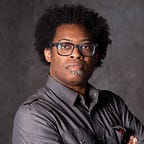Honoring Black History: African American Martial Art Heroes Help Make Martial Arts Mainstream
Americans love martial arts but what most do not realize is that African Americans were important in making it a phenomena in pop culture.
By Solomon O. Smith, Managing Editor
After World War II, many U.S. servicemen were exposed to Asian culture for the first time, including martial arts. After returning home to the U.S., Asian martial arts were spread throughout the country. While Chuck Norris, and a few other talented martial artists were able to secure a movie careers and became the face of martial arts in America, African Americans also represented martial arts and created a name for themselves on the world stage and on the silver screen. Black History Month is a fine time to look at a few African Americans that helped contribute to martial arts excellence in America.
Jim Kelly
The first Black martial arts hero to go mainstream was Jim Kelly. Co-starring in “Enter the Dragon” with Bruce Lee, Jim Kelly became an icon alongside other fiery African American actors who made strong, male, Black, rebellious fighters look cool.
“Man you come straight out of a comic book,” says Kelly’s character to Han, the bad guy in “Enter the Dragon.” His onscreen charisma led to a film career spanning decades. “Black Belt Jones,” his first leading role, was a success earning over $720,000 at the box office which would be about $3.9 million today, according to the movie’s IMDb page.
Many criticized the types of films Kelly made but their popularity opened up avenues for other Black actors as viable leading men in large productions. He was one of the few Black heroes on screen like Richard Roundtree, Jim Brown and a few others. Kelly had his own goals which he made clear in a 1973 interview in Black Belt Mag’s sister magazine, Fighting Stars.
“I don’t want to be Jim Brown or Fred Williamson,” said Kelly. “I just want to be Jim Kelly and get that first Black manly image on the screen that kids can identify with.”
He was an impressive martial artist trained in Shorin-ryu karate and opened a school in Los Angeles, California in the Crenshaw district where he and instructors under him taught children and adults. His presence on screen opened up a path for skilled black martial artists who were the epitome of cool like Wesley Snipes’ “Blade” and the late Chadwick Boseman’s T’Challa from “Black Panther.” In an interview on badazzmofo in 2013 a reflective Kelly talked about some of the difficulties of being seen as a Black hero on screen in the 1970s.
“There’s a fear of projecting strong black males in Hollywood,” said Kelly “it’s amazing to me.”
Jim Kelly passed away at the age of 67on June 29, 2013 from cancer.
Dr. Moses F. Powell
Powell became famous for dynamic demonstrations of his style, its effectiveness and his mastery. In 1965 he demonstrated at the World’s Fair in New York, in 1971 was the first martial artist to perform at the U.N. He was so impressive that he was invited to teach the Drug Enforcement Agency(DEA), the FBI, and other law enforcement organizations, according to his student Jerry Denson’s blog, The Superior Martial Artist.
“There is really no such thing as the best style or discipline when it comes to self-defense, all disciplines have something valuable to offer and have their flaws,” said Powell in an interview with Denson.
“A student who practices karate will only help to enhance his capabilities if he or she is enrolled in a boxing class, Kung Fu class, Jujitsu or other discipline.”
Powell passed away on Saturday, January 22, 2005.
Taimak Guarriello
Starring as the titular Bruce Leeroy, Guarriello’s movie “The Last Dragon” has so many quotable lines which have entered the African American Lexicon. It would be difficult to find a Black household where at least one person has not seen the film or hasn’t heard the line “who’s the mastah.” The movie also has deep roots to giants in the African American movie industry.
The director, Michael Schultz, is a Black Filmmakers Hall of Fame inductee, and Obie Award winner, according to IMDb. He directed many Black classics like 1975’s “Cooley High,” about young African American’s in the life-altering weeks before their high school graduation, 1972s “To be young Gifted and Black,” about Lorraine Hansberry the author of “A Raisin in the Sun,” Richard Pryor as the first Black Nascar racer in “Greased Lightning,” as well as modern Black led series like television’s “Black Lightning.” The movie is also connected to the Motown icon Barry Gordy who was a driving force in its production and casting, according to the long-standing super fan site The Last Dragon Tribute.
Ron the “Black Dragon” Van Clief
Actor, professional fighter, entrepreneur and grandmaster of his own style, Chinese Goju, Ron Van Clief has done it all. Learning, and practicing Jiu Jitsu, at 78 years old he leads from the front. His film career began in 1974 with the movie “The Black Dragon” and he continues to work as an actor and has been a choreographer for martial art movies for over 30 years.
Van Clief was one of the first Americans to bring full-contact competitions into the spotlight on the East Coast. He trained with some of the early greats like founder of Wing Tsun Association Leung Ting, Modern Arnis Master Remy Presas, and Master Moses Powell, according to his bio.
He was in the fighting circuit since the 1950’s, and on December 16, 1994 he fought Royce Gracie in the Ultimate Fighting Championship (UFC 4) with a broken foot. He also served as commissioner of the UFC for a short time.
